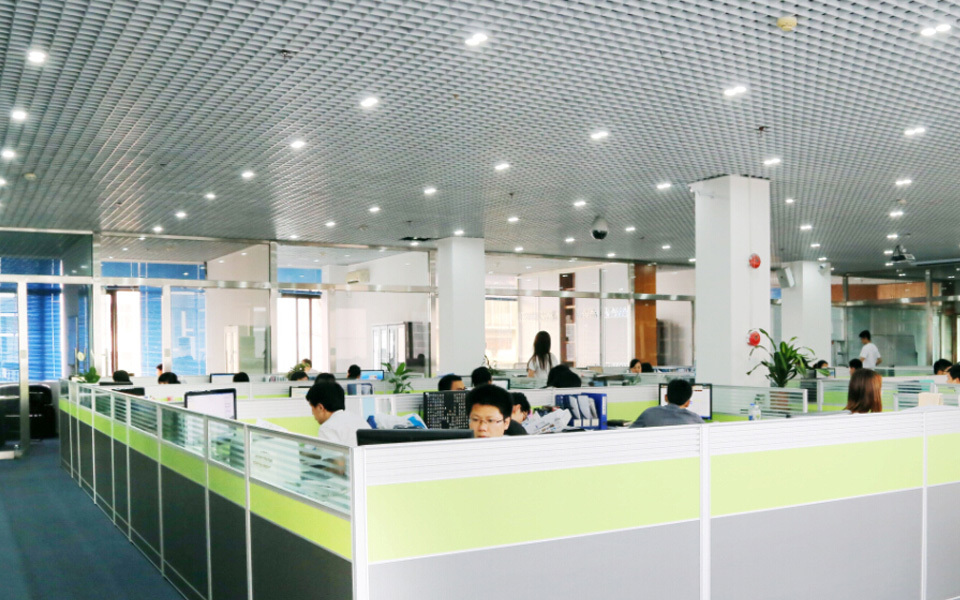We will accelerate the layout of new infrastructure and lay a solid foundation for the development of the digital economy industry
2022-09-22 00:00
Compared with traditional infrastructure, new infrastructure construction focusing on high-quality development (referred to as "new infrastructure") has undoubtedly attracted more attention. Especially this year, the repeated negative impact of the epidemic on economic growth has been serious, and the new infrastructure construction has received unprecedented attention at the policy and market levels as an important measure to cope with the current downward pressure on the economy and stabilize economic growth.
The new infrastructure is based on information networks, supported by high-tech such as the Internet of Things, big data and artificial intelligence, and driven by technological innovation, which not only provides technical support for the innovation and development of China's emerging industries, but also provides strong momentum for the high-quality development of China's economy. The "14th Five-Year Plan" proposes to systematically lay out new infrastructure and accelerate the construction of fifth-generation mobile communications, industrial Internet, and big data centers.
Policy warm wind frequently blows to new infrastructure Since
entering 2022, the implementation of new infrastructure policies and project supporting projects have accelerated. In April, the Central Financial and Economic Commission proposed to strengthen the construction of infrastructure upgrading in information, science and technology, logistics and other industries; In May, the State Council issued the Package of Policies and Measures to Stabilize the Economy, proposing to expand the support areas of special debt, giving priority to new infrastructure and new energy projects into the scope of support; In June, the National Development and Reform Commission and other nine departments jointly issued the "14th Five-Year Plan" for renewable energy development, focusing on the deployment of urban rooftop photovoltaic actions, "photovoltaic +" comprehensive utilization actions, and new energy power station upgrading and transformation actions.
Judging from the recent measures and information released by the central bank, the National Development and Reform Commission and other ministries and commissions, the signal of the central ministries and commissions to implement the policy of stable growth is very clear. New infrastructure has become an important starting point for the central and local governments to stabilize the economy, and has received great attention in development strategies and specific actions, and has specific arrangements in the package of policies and measures introduced by the state and local governments to stabilize the economy, which provides a rare window period for new infrastructure investment.
With the full release of policy dividends, all fields of China's new infrastructure construction have been fully rolled out, practice and policy are intertwined, and a good policy environment is conducive to improving the long-term supply quality and service efficiency of new infrastructure. Whether from the perspective of development trend or development potential, the digital economy has completed the leap to agricultural and industrial economy and has become the mainstream economic form. Placing new infrastructure at such a strategic height is not a stopgap measure to deal with an economic downturn on a whim.
At
present, the digital transformation of the global economy and society is in the ascendant, and competition in the field of digital economy is intensifying, accelerating the construction of new infrastructure and expanding effective investment to alleviate the pressure of demand contraction faced by market players to a certain extent, boost the economy, and stabilize development expectations. New infrastructure is becoming an important starting point for national policies and high-quality development of various localities, driving new highlights of economic growth.
Judging from the policy and layout of new infrastructure, all provinces and cities have launched their own action plans and special plans. Key provinces and cities combine the needs of their own development, especially for the new economy and digital economy, and combine some local characteristics to highlight the local characteristics of new infrastructure. For example, Shanghai mainly plans and lays out new infrastructure for the "four new" system, and after establishing the promotion mechanism, it took the lead in introducing the Shanghai version of the "35 New Infrastructure Articles", which are very distinctive in key project investment and industrial science and technology innovation infrastructure; In terms of innovative new infrastructure, Guangdong combines infrastructure such as Science City, scientific equipment, and advanced computing power to promote and future-looking the layout of future networks, and take the lead in building the country's leading industrial Internet. Zhejiang takes the technology application industry as the starting point, coordinates the promotion of new infrastructure, forms a promotion mechanism with the strength of the whole province, and lists tasks and creates a number of application scenarios; Shandong's characteristics are also more prominent, mainly highlighting the application of new infrastructure in the industrial field, especially the industrial Internet of intelligent manufacturing, the Internet of Things, as well as smart ocean, smart people's livelihood and other application scenarios as the starting point, to promote the combination of new infrastructure and application.
The key
to building "new infrastructure" lies in the "new", and using reform and innovation to promote a new round of infrastructure construction instead of retaking the old road. On the one hand, on the basis of supplementing traditional infrastructure such as railways, highways, rail transit, and airports, we should vigorously develop a new generation of new infrastructure such as information technology, ultra-high voltage, artificial intelligence, industrial Internet, new energy, charging piles, smart cities, intercity high-speed railways and intercity rail transit, big data centers, education, and medical care.
On the other hand, in addition to hard "new infrastructure", it should also include soft "new infrastructure", that is, institutional reform: make up for the shortcomings of medical care, reform the medical system, increase the opening up of auto finance, telecommunications, and power infrastructure industries, increase the protection of intellectual property rights, improve the business environment, reduce taxes and fees, especially social security payment rates and enterprise income tax, implement competition neutrality, develop multi-level capital markets, and establish new incentive mechanisms to mobilize the enthusiasm of local governments and entrepreneurs.
The new infrastructure is a complex system, and it is necessary to adhere to the system concept, scientifically plan and promote the construction of information infrastructure, scientific and technological infrastructure and smart infrastructure. All localities should vigorously promote the construction of new infrastructure, not only focusing on coping with the risks and challenges faced by short-term economic operation, but also starting from the "14th Five-Year Plan" period and the general trend of China's economic development in the medium and long term, grasping the current economic situation, actively adapting to changes in domestic and international development conditions and development environment, and striving to achieve greater development.
Conclusion: As an important growth pole for future economic development, the development of digital economy is the key to promoting the new development pattern of "dual circulation", and the realization of this goal is inseparable from the support of new infrastructure. Compared with traditional infrastructure, new infrastructure is more adaptable to a new round of opportunities and challenges, more adapted to new development concepts, and has more high-tech content.
Source: Smart City Network
[Statement: The content of this article comes from "Smart City Network", the purpose is to convey more information, such as copyright and other issues, please contact this website to delete! ] 】
Recommended News

Copyright © Shenzhen Newabel Electronics Co., Ltd. 粤ICP备05093332号 SEO
powerby:300.cn






